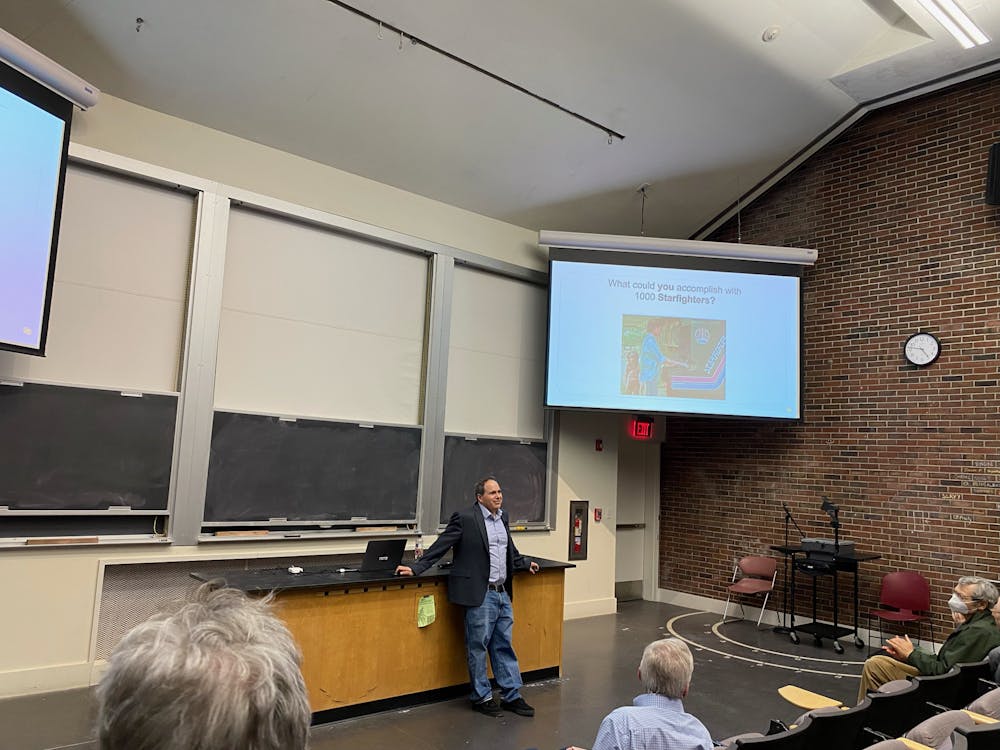NASA astrophysicist and Citizen Science Officer Marc Kuchner facilitated a seminar Tuesday in Barus and Holley on the growing importance of “citizen science” — an uncoordinated collection of independent volunteers around the world — in advancing the discovery of exoplanets and planet formation.
Kuchner said that it has become significantly easier for ordinary people in the public to contribute to scientific research since the advent of the internet. These “citizens” — some data scientists, others stay-at-home parents — have collectively become an accessible and powerful tool for crowdsourcing labor. Under Kuchner’s leadership, NASA has increasingly sought to utilize this free talent to advance space discovery.
There was a “revolution that has unlocked a powerful and addictive new research mode,” Kuchner said.
In all, these citizen scientists have discovered about one third of exoplanets beyond the solar system, as well as numerous comets.
There are 28 ongoing citizen science projects created by NASA, 15 of which can be done by anyone, anywhere. Of about two million volunteers, 140,000 have advanced degrees, he added.
The 1999 NASA Stardust Mission, a project focused on examining cometary dust samples, sparked Kuchner’s interest in citizen science. Through a website called Stardust@home, 33,000 volunteers learned from free training videos and collectively discovered eight interstellar grains for NASA, advancing the scientific understanding of comets.
The success of this project inspired NASA to pursue more citizen science projects, including more than 90 programs in the “Zooniverse,” a web portal with the largest community of citizen scientists.
Planet Hunters is the most successful Zooniverse project, with more than 500,000 volunteers. The website asked users to collectively categorize 20 million graphs representing the light intensity of celestial objects.
“Volunteers aren't just going online to look at pretty pictures,” Kuchner said. “They're going online because they want to make contributions to world knowledge. They want to do something that has a lasting impact. So they don't mind staring at these rows of dots, which is what the light curves are.”
The sheer number of volunteers allows NASA to have many sets of eyes on the same data, requiring that 30 different users look at each light curve so that errors are minimized.
In his book, "Marketing for Scientists: How to Shine in Tough Times," Kuchner investigated what citizen scientists do after a project is completed. He found that most of these volunteers continue to find new NASA projects to contribute to. Some even write part of their will to NASA.
In recent years, volunteer-supported projects have amassed a base of “superusers” who dedicate much of their time to these projects. This phenomenon became apparent during a 2014 mission called Disk Detective, which sought to find stars surrounded by circumstellar disks. The project garnered 30,000 volunteers, but contributions were far from equal — after just one month from launch, a single citizen scientist had alone completed 32,000 image classifications. By the time the project had ended, a small number of dedicated “superusers” had completed more than half of the classifications.
Such superusers have gone far above their pay grade. Some made video tutorials for new volunteers, while others worked to translate the NASA website into other languages.
One superuser from Argentina, named Hugo Durantini Luca, introduced NASA astronomers to scientists at an observatory in Argentina so they could understand more about southern hemisphere targets. He even drove 12 hours across South America to help out with an observatory run.
Another superuser named Dan Caselden, a data scientist by day, even reached out to NASA to inform them that their Zooniverse interface should be redesigned. He proceeded to download the data and built his own tool for visualizing it. This new format has been the backbone of about half of all discoveries completed by the program, according to Kuchner.
“This made for a change in the philosophy for how citizen science can be,” Kuchner said.
Because NASA has seen so much success from volunteers, Kuchner said they have continued to direct more resources toward the program. A recent project launched in 2017, called Backyard Worlds: Planet 9, was intentionally designed to keep users online for as long as possible.
“It offers something for people to enjoy at a very superficial level, if you'd like to stop by and spend 10 minutes searching for Planet Nine. But the project is designed to pull you in and turn you into a superuser,” Kuchner said.
So far, the program has captured 332 superusers, he added. Among them are lawyers, mental health counselors and stay-at-home parents. Students are welcome, too.
Grace Holleb was a University News editor covering academics and advising.





